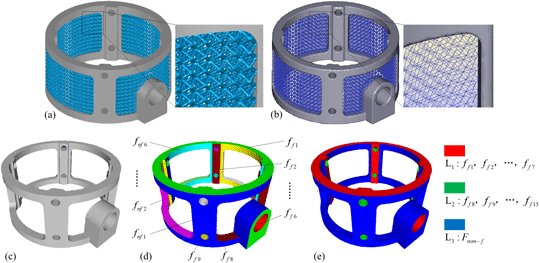Crossref Citations
This article has been cited by the following publications. This list is generated based on data provided by
Crossref.
Fé-Perdomo, Iván La
Ramos-Grez, Jorge Andres
Beruvides, Gerardo
and
Mujica, Rafael Alberto
2021.
Selective laser melting: lessons from medical devices industry and other applications.
Rapid Prototyping Journal,
Vol. 27,
Issue. 10,
p.
1801.
Huang, Renkai
Dai, Ning
Pan, ChunRong
Yang, Youwen
Jiang, Xiaotong
Tian, Sukun
and
Zhang, Zhe
2022.
Grid-Tree Composite Support Structures for Lattice Parts in Selective Laser Melting.
SSRN Electronic Journal ,
Mele, Mattia
Campana, Giampaolo
and
Bergmann, André
2022.
Optimisation of part orientation and design of support structures in laser powder bed fusion.
International Journal on Interactive Design and Manufacturing (IJIDeM),
Vol. 16,
Issue. 2,
p.
597.
Huang, Renkai
Dai, Ning
Pan, Chunrong
Yang, Youwen
Jiang, Xiaotong
Tian, Sukun
and
Zhang, Zhe
2023.
Grid-tree composite support structures for lattice parts in selective laser melting.
Materials & Design,
Vol. 225,
Issue. ,
p.
111499.
Morvayova, Alexandra
Fabbiano, Laura
Contuzzi, Nicola
Caiazzo, Fabrizia
and
Casalino, Giuseppe
2023.
On the influence of building position on dimensional accuracy and surface quality of aluminum blocks manufactured by L-PBF.
Optics & Laser Technology,
Vol. 167,
Issue. ,
p.
109830.
Zhao, Hongjian
Yang, Binghua
Zhang, Rui
Tian, Yuxuan
Liu, Changsheng
and
Zhan, Yu
2024.
Study on the residual stress of simple cubic lattice structure produced by selective laser melting.
Journal of Sandwich Structures & Materials,
Vol. 26,
Issue. 7,
p.
1243.
Zou, Qiang
and
Luo, Guoyue
2025.
Geometric Modeling for Microstructure Design and Manufacturing: A Review of Representations and Modeling Algorithms.
Computer-Aided Design,
Vol. 180,
Issue. ,
p.
103834.
Wenger, Sebastian
Shevchenko, Iryna
zur Jacobsmühlen, Joschka
Krüger, Jörg
and
Uhlmann, Eckart
2025.
Learning automatic part orientation for powder bed fusion of metal from part data.
Progress in Additive Manufacturing,
Vol. 10,
Issue. 3,
p.
1713.
Uzun, Fatih
and
Korsunsky, Alexander M.
2025.
Reconstruction of residual stresses in additively manufactured Inconel 718 bridge structures using contour method.
The International Journal of Advanced Manufacturing Technology,
